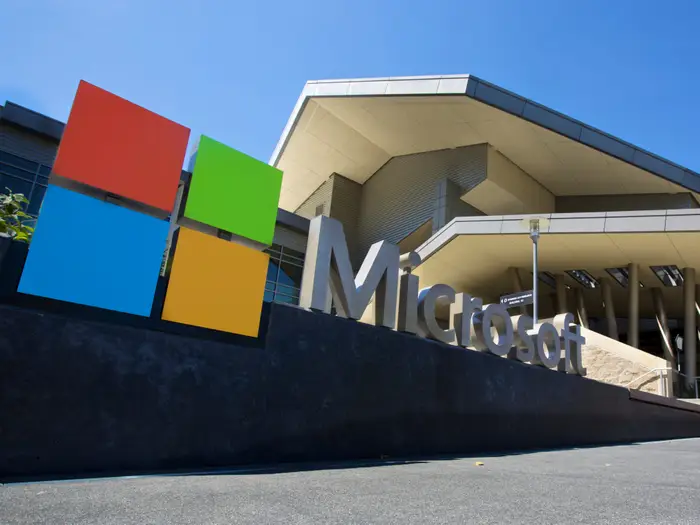Microsoft layoffs: AI Boom, Human Bust: What You Need to Know Now
Microsoft has announced the elimination of approximately 7,000 positions—an announcement that came not with the somber tone of hardship, but rather with an unsettling optimism about “streamlining for innovation.” This isn’t just a cost-cutting maneuver. It’s a blueprint for the future of work at Microsoft: fewer humans, more automation, and a C-suite vision that favors artificial intelligence over human capital.
The layoffs affect roughly 3% of Microsoft’s global workforce, a fact confirmed on May 13 by multiple sources including CNBC and The Seattle Times. While job cuts span several divisions, they are concentrated in roles related to project coordination, mid-level management, and support services. These positions are increasingly handled by intelligent automation systems.
The company, which has around 221,000 full-time employees worldwide, is executing one of its most significant restructurings in years—not due to declining performance, but because of its pivot toward a leaner, AI-enhanced operational model.
Microsoft’s move signals something deeper than economic adjustment. It points to a strategic realignment of the workforce around AI—raising questions about job security, the future of middle management, and whether this is a template other tech giants will soon follow.
Microsoft layoffs 7000 Jobs Cut — But Why This Time Feels Different
Layoffs in tech aren’t new. But this time, the logic behind the cuts isn’t declining revenue or missed forecasts. Microsoft posted strong quarterly profits, with AI-related products like Copilot driving a 20% boost in enterprise subscriptions.
Instead, the layoffs come as part of a pivot: transitioning to an AI-first operational model. Internal memos leaked to The Verge and Business Insider cite “operational efficiency through intelligent systems” and “org chart flattening” as key rationales.
What does that mean in plain English? Middle managers are being replaced by software.
Inside Redmond: How Microsoft Is Quietly Rewriting Corporate Structure
At Microsoft HQ in Redmond, traditional team structures are being quietly dismantled. Sources report that conventional verticals are being restructured around product clusters powered by AI workflows. Where once there were directors managing multiple reports, now there are intelligent dashboards overseeing KPIs, feeding data into Copilot, and flagging anomalies to senior leadership.
A senior engineer, who requested anonymity, shared: “My team used to have a program manager, a QA lead, and a business analyst. Now it’s just me and two devs. Copilot flags regressions, runs test coverage, and generates sprint reports.”
Employees in the Seattle area have been particularly affected, with KOMO News confirming that a significant portion of the cuts target local operations. Internal sources describe an atmosphere of quiet anxiety, with staff unsure how deep the automation cuts will go.
The New Middle Management: Copilot, Dashboards & HR Bots
Perhaps the most jarring shift is the replacement of middle management with layered AI tools. HR, task allocation, internal comms—formerly human functions—are now executed by a combination of Teams bots, Power Platform apps, and embedded Copilot flows.
“I got my performance review via a Copilot dashboard,” said a recently laid-off employee. “No conversation, no feedback loop. Just a metrics report and a notice of redundancy.”
This isn’t just about efficiency. It’s about redefining managerial roles as data interpretation tasks rather than leadership functions. Microsoft’s own reporting framework has been updated to generate Copilot-readable scorecards.
From Satya’s Memo to Wall Street’s Applause: The Uncomfortable Truth
CEO Satya Nadella’s public message framed the layoffs as a step toward “intelligent transformation” and “maximizing shareholder value.” In a May 13 town hall, CFO Amy Hood confirmed the company will continue “investing in AI acceleration” while “streamlining areas that slow us down.”
The market responded with enthusiasm: Microsoft stock jumped 4.2% the day after the announcement.
But behind the market’s confidence lies a deeper discomfort among employees. Forums like Blind and Reddit are filled with posts from insiders fearing the normalization of AI-led corporate structures.
Wall Street may celebrate short-term gains, but what happens when corporate loyalty dissolves in favor of code?
Voices from Within: Anonymous Testimonies from Laid-Off Employees
- “I trained the model that eventually replaced me. There’s no poetic justice in that. Just silence.”
- “Our department didn’t shrink. It vanished. Everything’s done through automation now.”
- “I used to mentor new hires. Now onboarding is handled by a Power App. I wasn’t just laid off—I was made irrelevant.”
These voices speak not of resistance to change, but of the emotional cost of being optimized out.
Redefining Productivity: What the New Microsoft Actually Looks Like
Gone are the days of large cross-functional teams. The new Microsoft is lean, AI-augmented, and fast-moving. Daily stand-ups are replaced with automated digests. Strategy meetings happen asynchronously via Loop notes populated by AI-generated insights.
Employees who remain are either AI-augmented engineers or executive strategists interpreting AI outputs. The middle is evaporating.
What You Must Watch: Signals This Will Expand to Other Tech Giants
- Google is ramping up Gemini integrations with its internal ops.
- Meta has announced AI-driven infrastructure to manage product rollouts.
- Amazon has quietly launched internal AI agents for workforce allocation.
Microsoft is not alone. It’s the first mover.
Expect similar headlines from other FAANG companies in the next two quarters.
Strategic Forecast: Next Layoff Waves, AI Deployment & Role Obsolescence
Microsoft insiders suggest that future waves may impact HR, compliance, and customer success roles—all prime targets for AI-based simplification.
AI deployment is no longer a side project. It is the operating system of the modern enterprise. And in this system, not every human role has a future.
The question now isn’t if AI will replace your job. It’s when, and how silently it will happen.





